What do we value? Art by Ai Weiwei makes us pause and think of that question.
Renowned and great artist Ai Weiwei who’s artworks speak on matters that affect us and who stands up for human rights in life and through his art, has a new exhibition called ‘Making Sense’ at the Design Museum.
The exhibition is focused on design and architecture, seeking to make the viewer think of the notion of value, making us question what it is we value, how we view things and how that may change.
A large scaled installation of a house which once belonged to a prosperous family in Zhejiang province, in eastern China, during the early Qing dynasty (1644-1911 CE), is seen at the entrance of the Design Museum’s space. Most of these types of houses were destroyed, Ai Wewei paints this surviving house in industrial colours, fusing elements of past and present, the modern and ancient. By placing the house in a museum, does the house change its value? By highlighting its rarity do we look at it differently than we might have done? These questions on value are what Ai Weiwei's art propels.
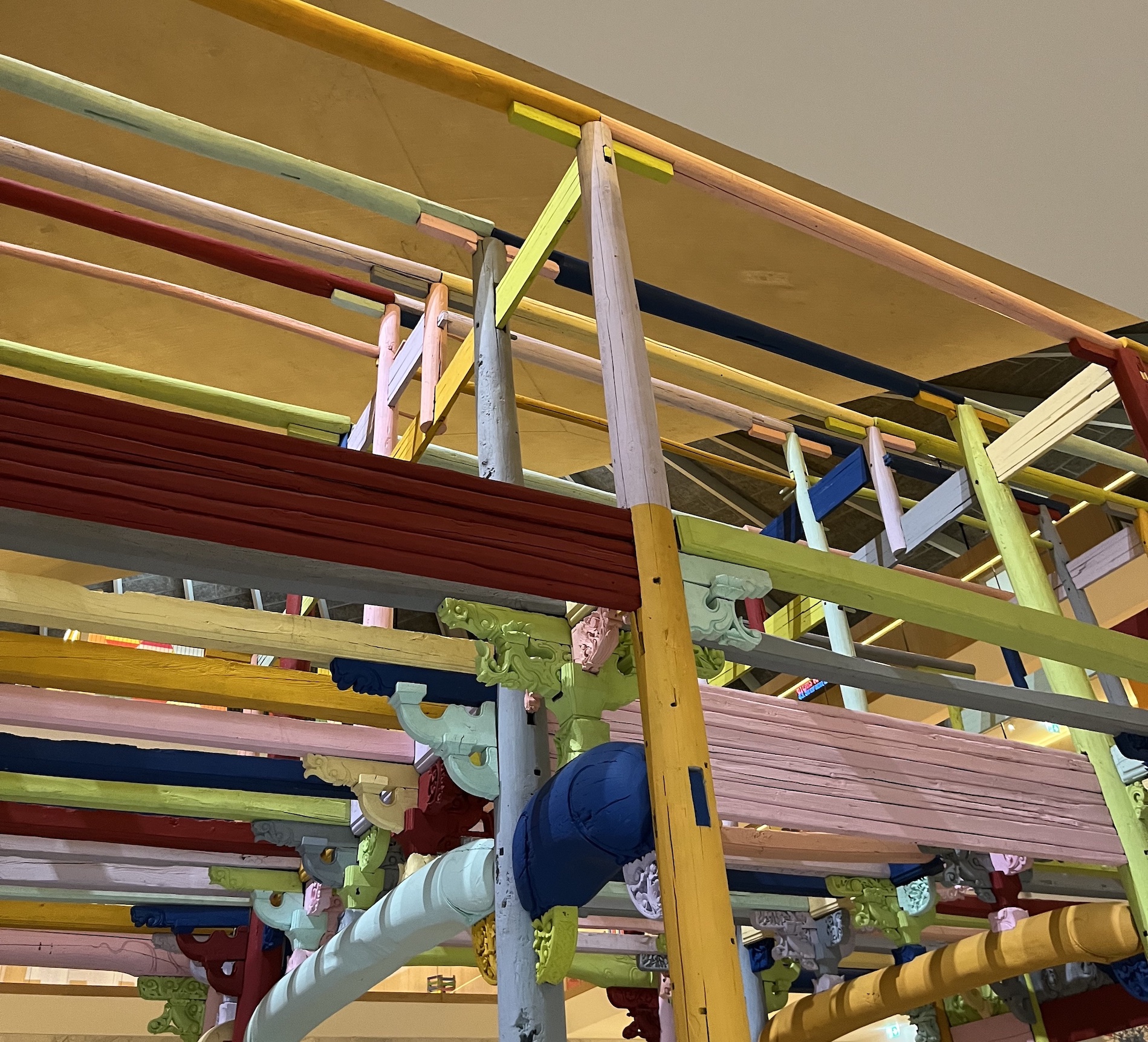
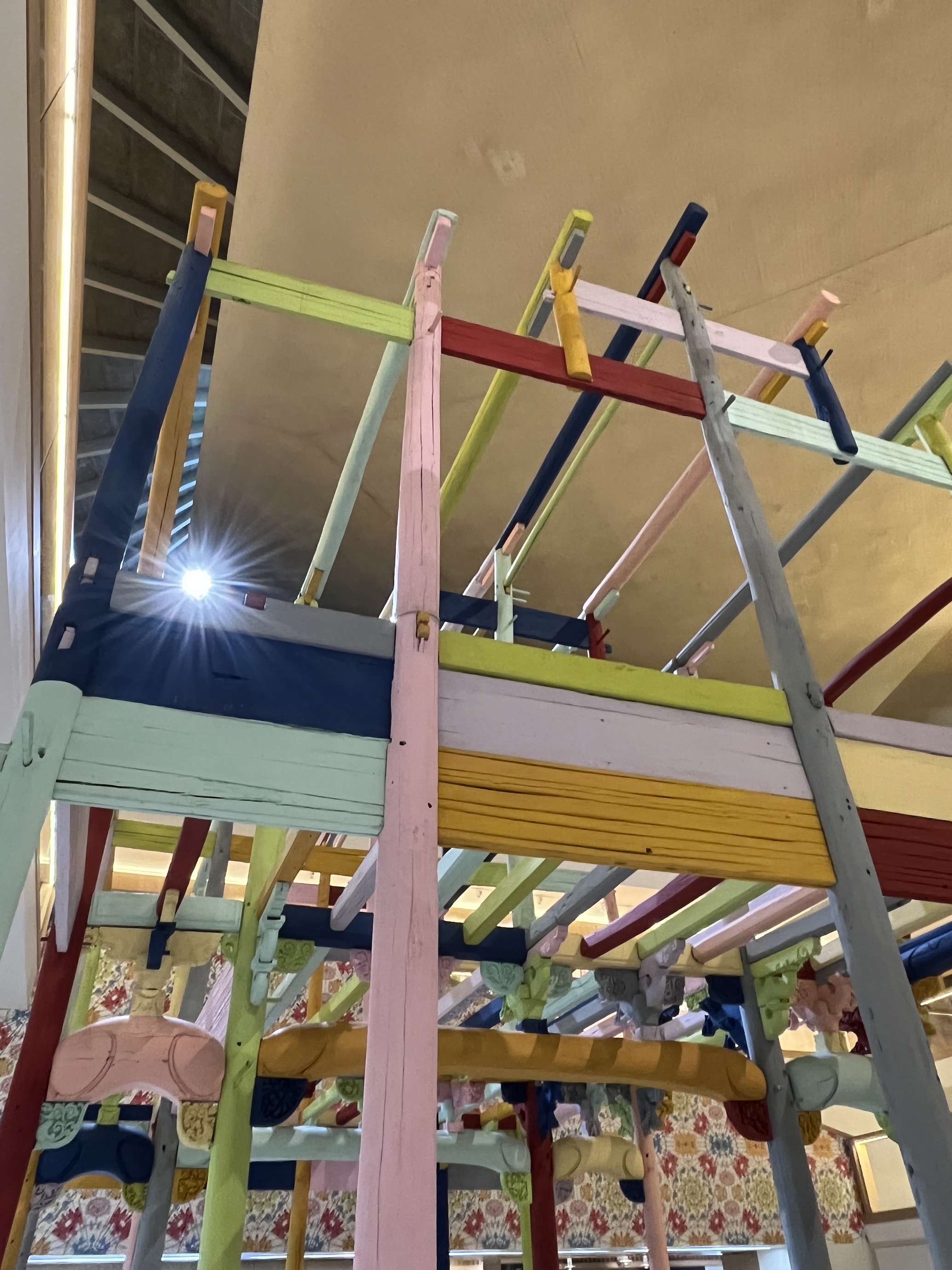
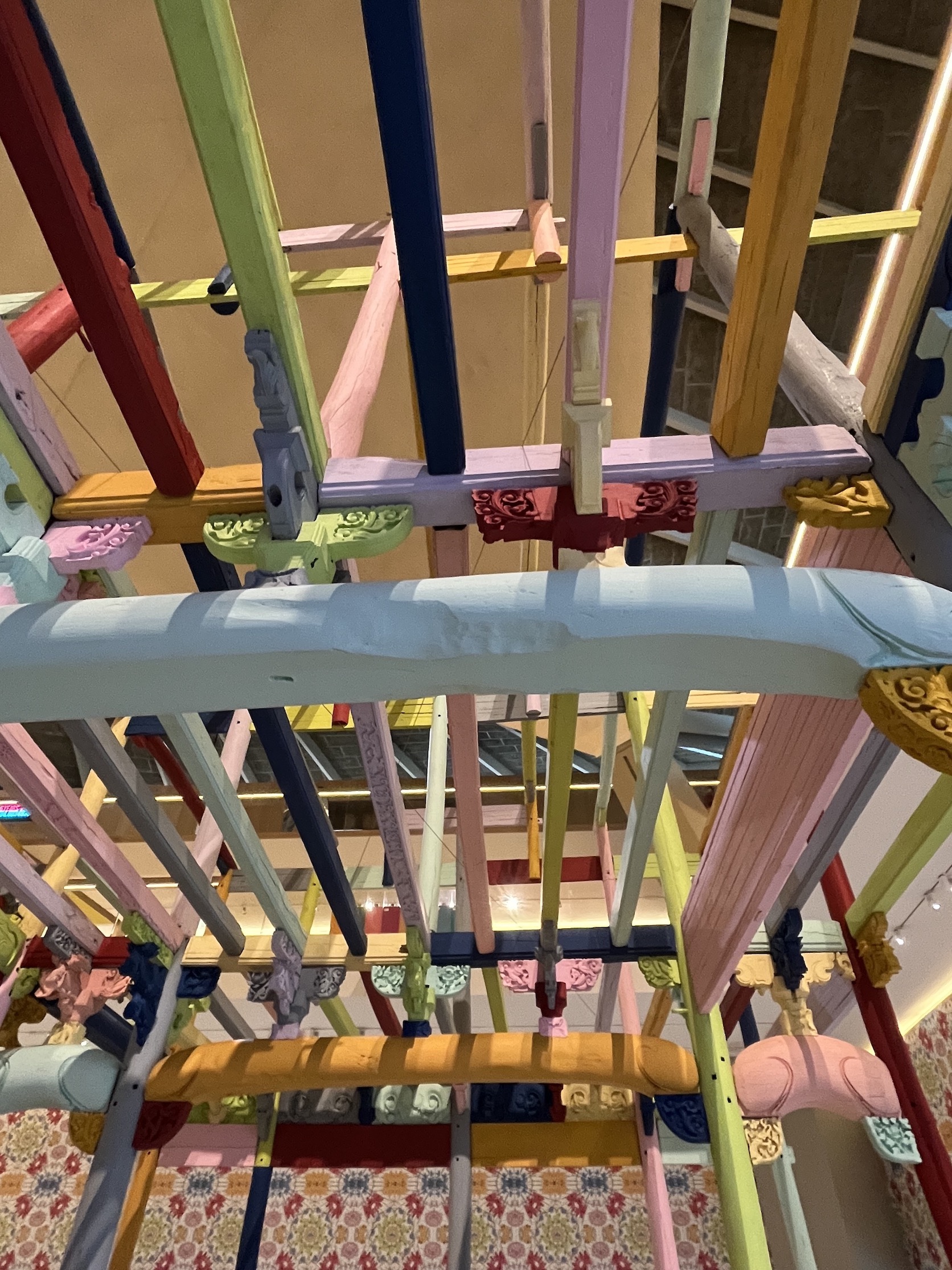
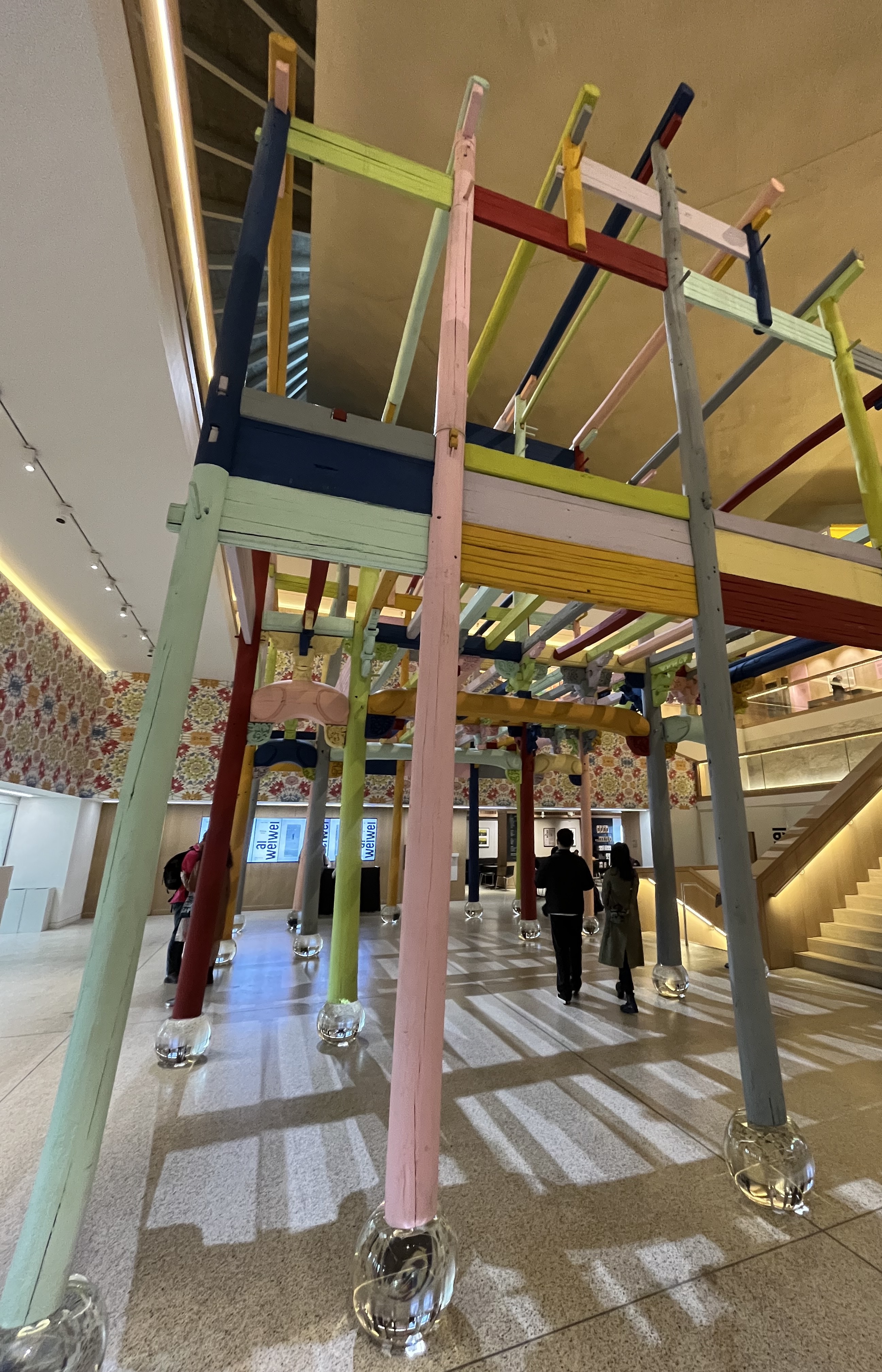
Ai Weiwei, Coloured House, 2013, at the Design Museum.
Photos taken at the the Design Museum.
The exhibition is comprised of thousands of objects that the artist has collected since the 1990’s. Five large floor spaces, the exhibition calls 'fields', are taken over with the collected objects.
As the Design Museum relays, the five fields are:
- Still Life. 1,600 tools dating from the late Stone Age made up of axe-heads, chisels, knives and
spinning wheels, a field of objects that have survived and forgotten crafts.
- Left Right Studio Material. Fragments of the remains of Ai Weiwei's porcelain sculptures that were destroyed when his ‘Left Right’ studio in Beijing was demolished by the Chinese state in 2018.
-Spouts. Porcelain spouts from teapots and wine ewers crafted by hand during the Song dynasty (960 – 1279 CE). These spouts are from pots that were made and considered not perfect, and so were broken off.
-Untitled (Porcelain Balls). Cannon balls made during the Song dynasty (960 – 1279 CE) from Xing ware, a high-quality porcelain. Previously used as a weapon of war.
-Untitled (Lego Incident). In 2014 Ai Weiwei started working with lego to produce portraits of political prisoners. As a result, Lego briefly stopped selling lego bricks to him, the artist then turned to social media, which resulted in lego bricks bring donated to him by the public. These donated bricks are presented at the Design Museum.

Ai Weiwei, Spouts, 2015.© Image courtesy Ai Weiwei Studio
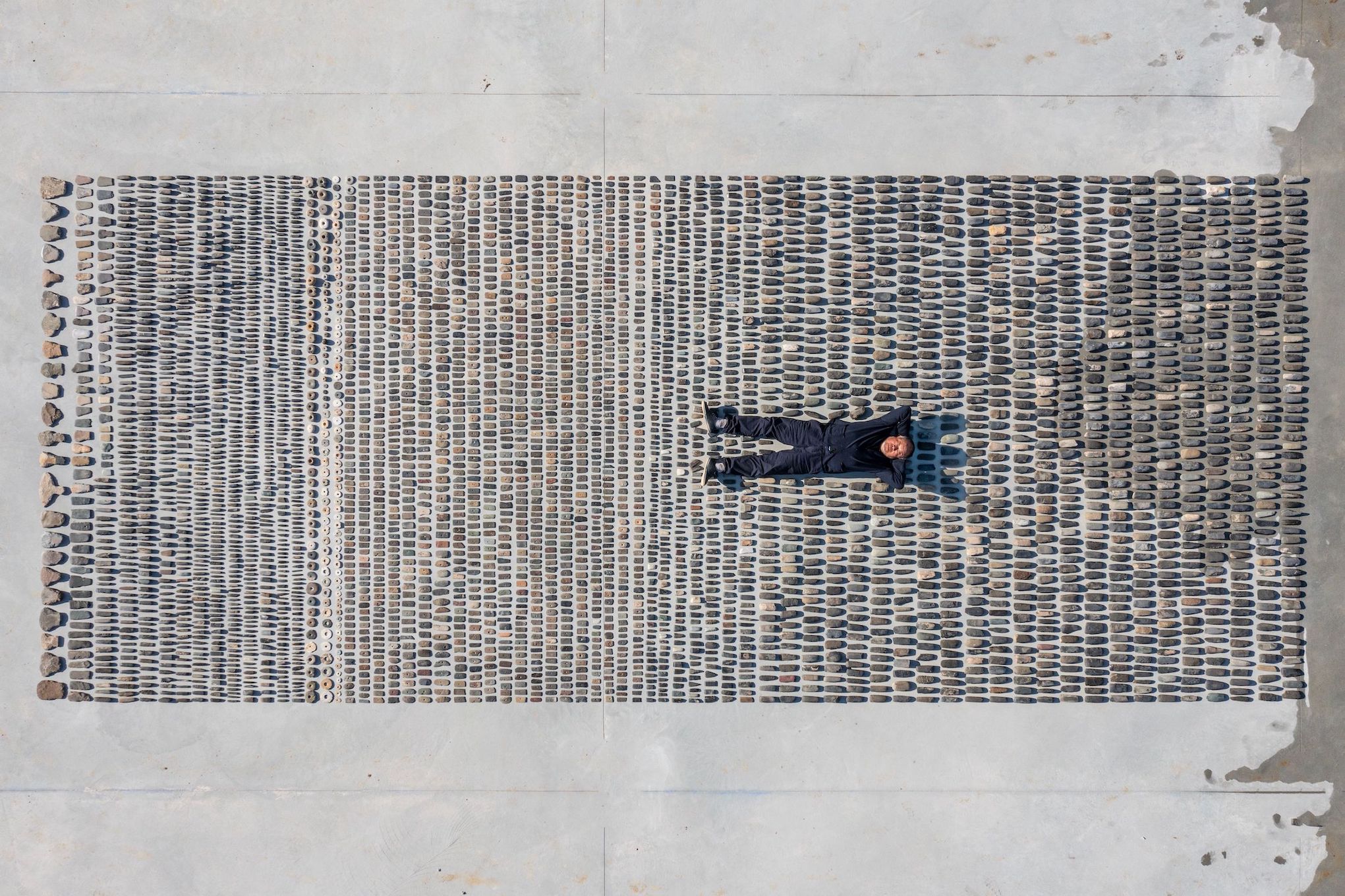
© Image courtesy Ai Weiwei Studio
Works by Ai Weiwei link past, present and future, craft, artefact and modernity, with objects reflecting these elements, pushing the boundaries of what an object means to us; its value and all the different ways we can define the word value in relation to us.
Everyday objects are redefined in materials such as marble or jade, turning an object of use into purely a decorative one, albeit a thought provocative one. Toilet paper which was of high value during the pandemic, is now in marble placed in a museum space. What value to we place on this utility in relation to today?
How do we value these objects and does that change depending on circumstances, space, on how an object is presented and with what material it is created in? Questions through art created by Ai Weiwei.
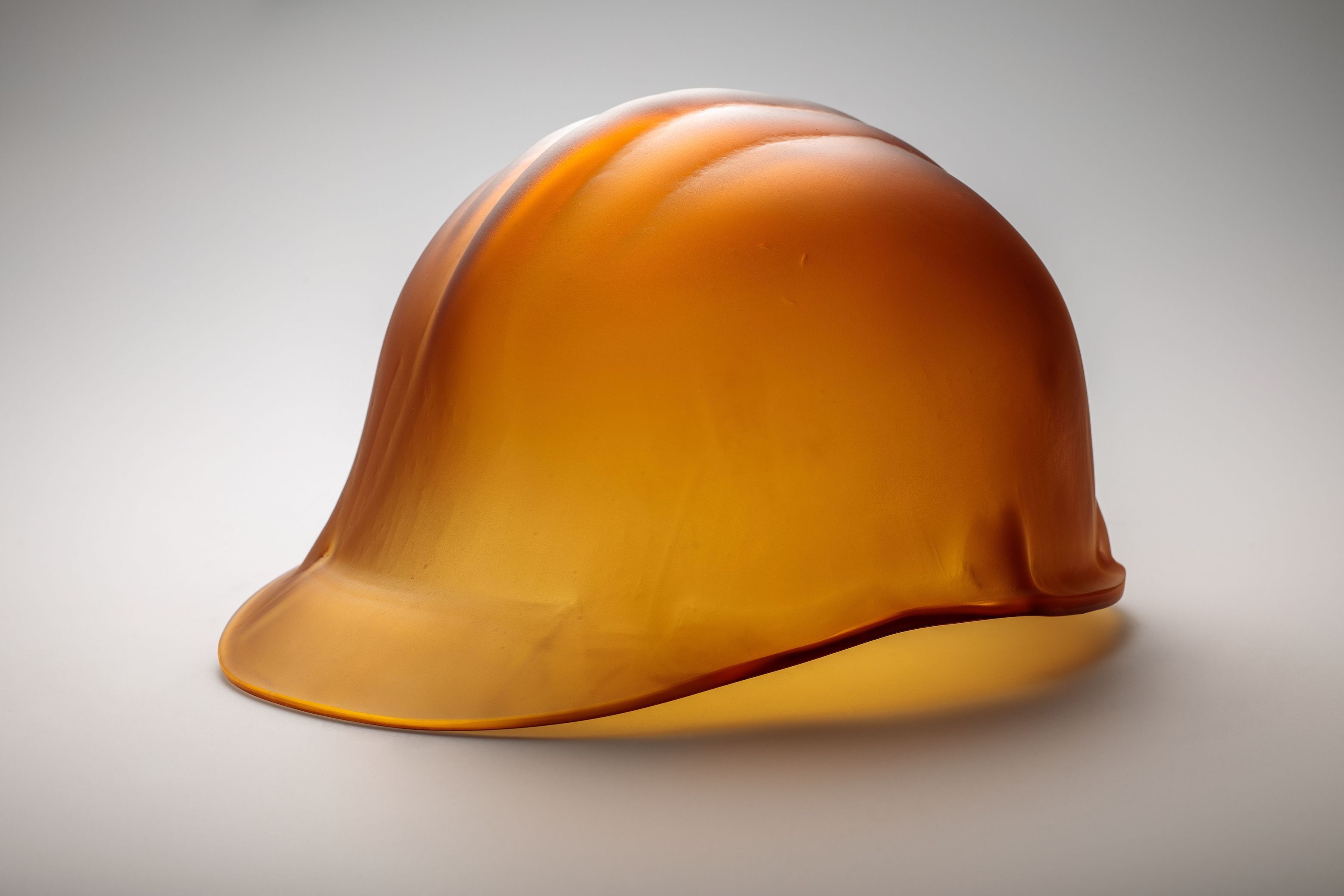
Ai Weiwei, Glass Helmet, 2022. © Image courtesy Ai Weiwei Studio
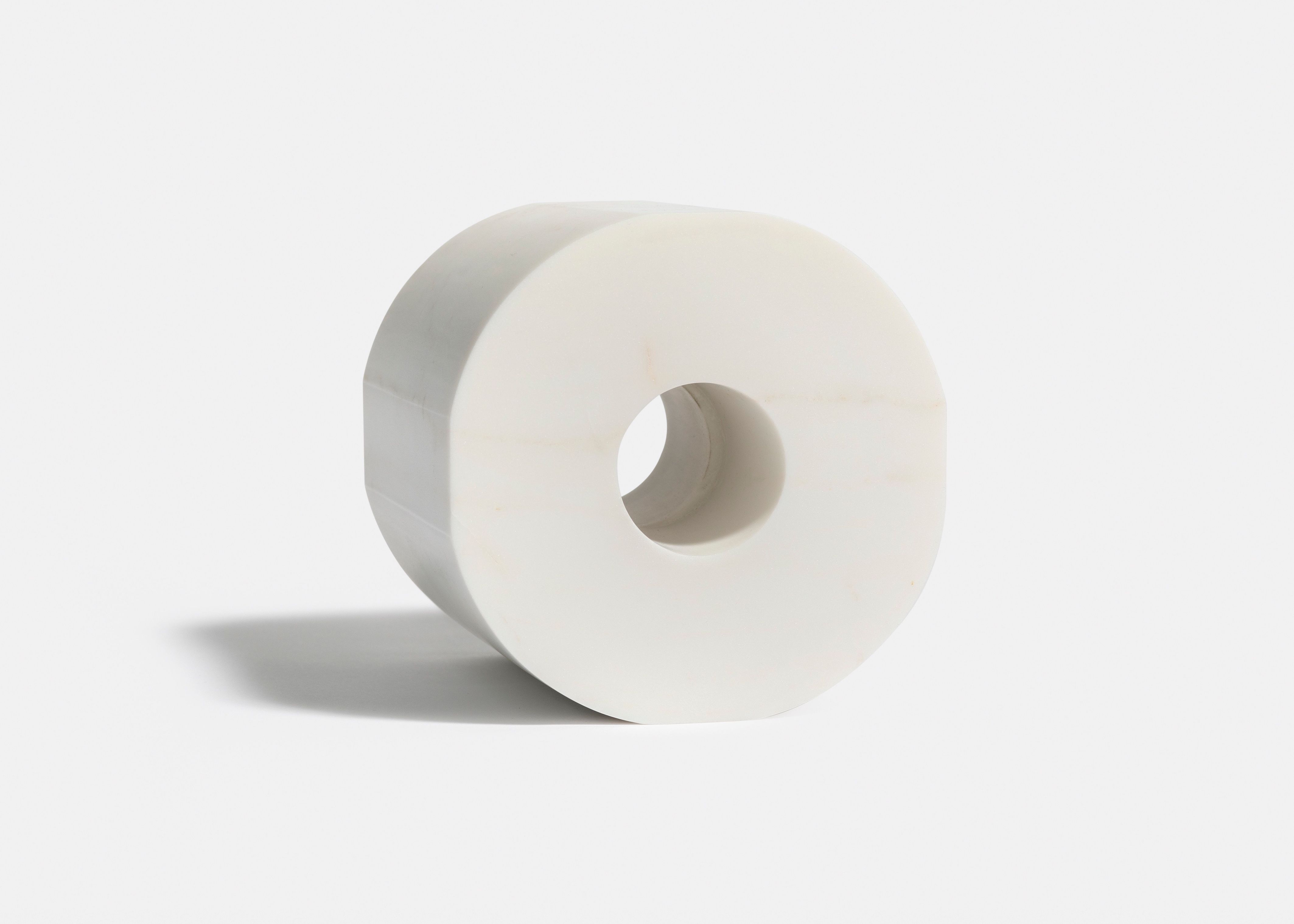
Ai Weiwei, Marble Toilet Paper, 2020. © Image courtesy Ai Weiwei Studio

Ai Weiwei, Han Dynasty Urn with Coca-Cola Logo, 2014. © Image courtesy Ai Weiwei Studio
Ai Weiwei’s Lego artwork created with 650,000 studs of Lego bricks, in 22 colours, recreates Claude Monet’s Water Lilies #1, confronting the viewer to think of what is constructed and what is not. Monet's pond and garden were man made not a natural landscape, through Ai Weiwei's lego work the viewer dives into these thoughts of constructed landscapes the artist contemplates on. The artwork includes a dark portal: a lego door to the underground dugout in Xinjiang province where Ai Weiwei and his father, Ai Qing, lived in forced exile in the 1960s.

Water Lilies #1, 2022, by Ai Weiwei. Lego bricks, Photo © Ela Bialkowska/OKNO studio. © Image courtesy of the artist and Galleria Continua
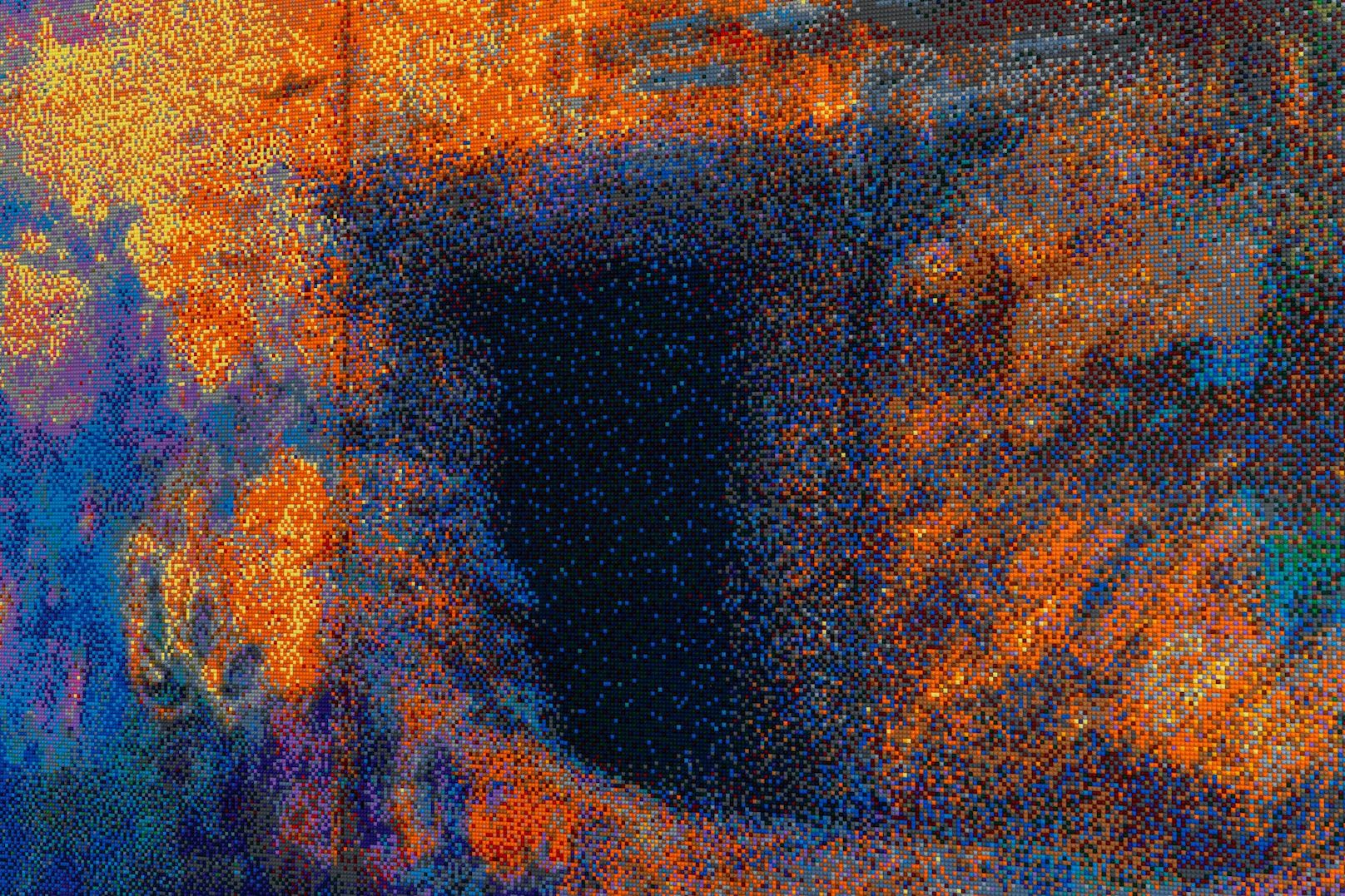
Detail from Water Lilies #1, 2022, by Ai Weiwei. Lego bricks Photo © Ela Bialkowska/OKNO studio.© Image courtesy of the artist and Galleria Continua
Ai Weiwei's art is thought provoking, relaying concerns and thoughts that are important to society, standing up for human rights and justice, as well as pausing questions through the tool of art. A great artist highlighting important notions.
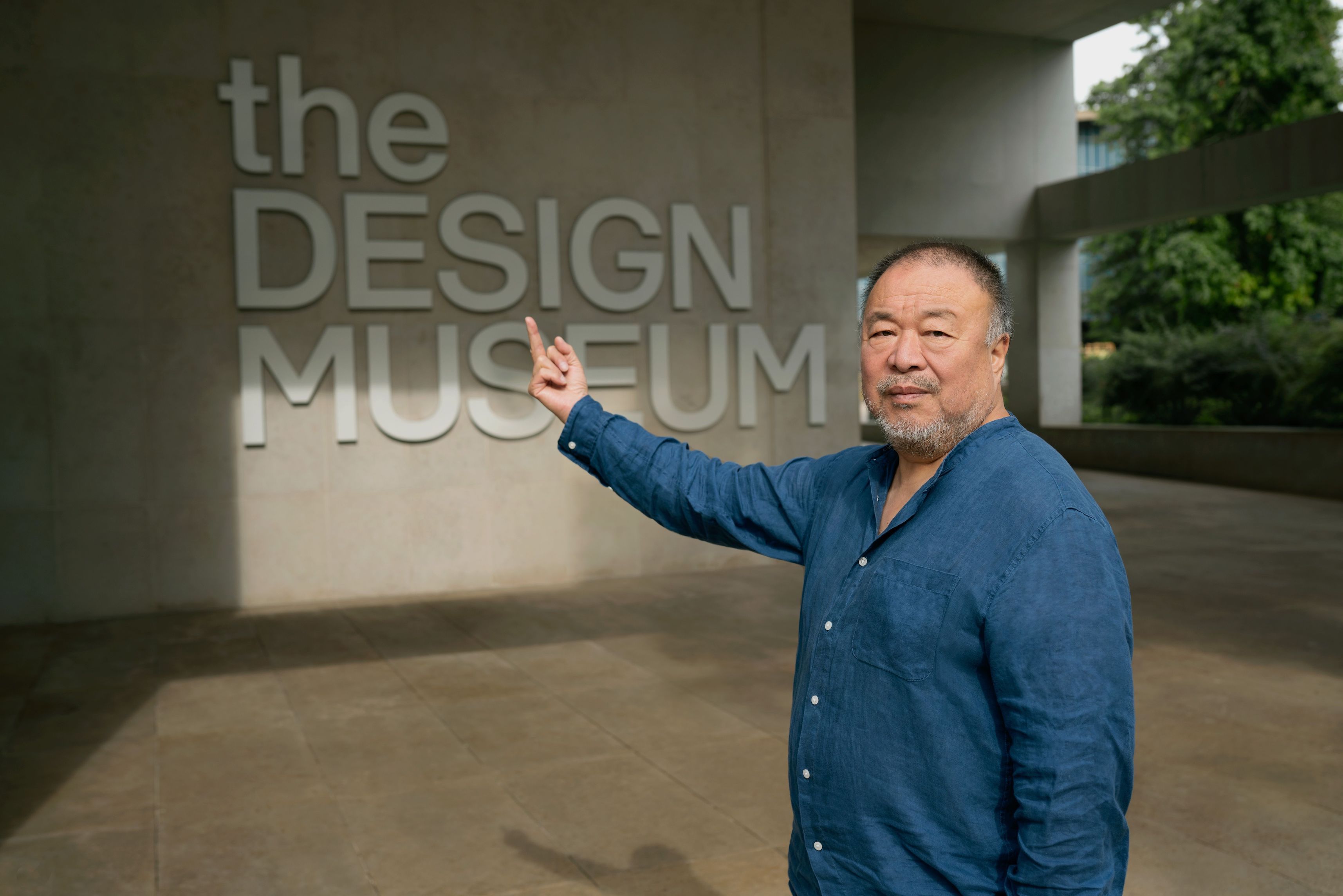
Ai Weiwei at the Design Museum, September 2022. © Rick Pushinsky for the Design Museum.
Ai Weiwei: Making Sense at the Design Museum from 07 April to 30 July 2023.
Curated by Justin McGuirk, Chief Curator at the Design Museum Rachel Hajek, Assistant Curator at the Design Museum
All pictures credited and copyright belonging to their respective owners as indicated under each image. Pictures from the Design Museum Press Images. No copies of images allowed.
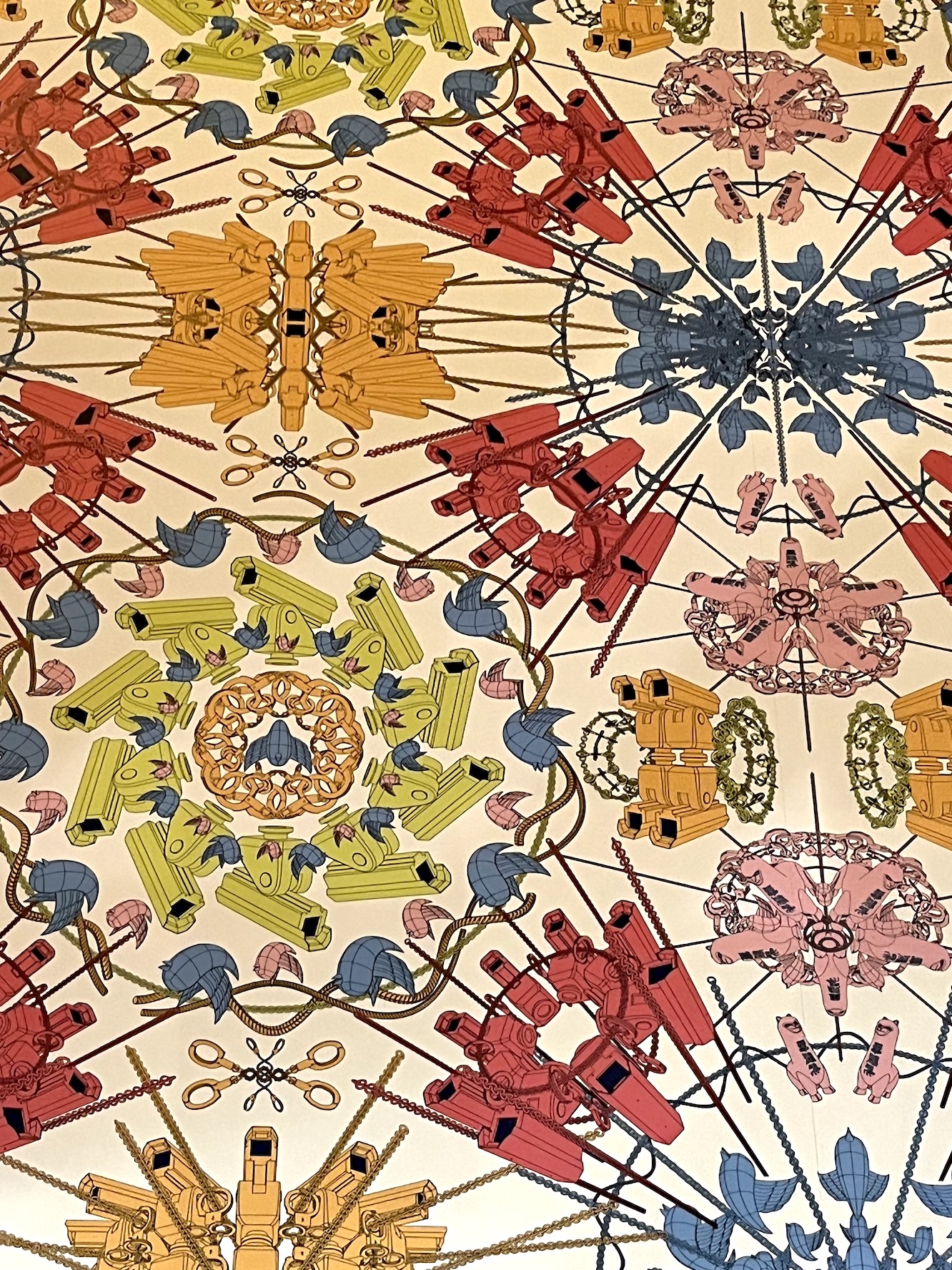
Ai Weiwei's wallpaper at the Design Museum. Photo taken at the the Design Museum.
